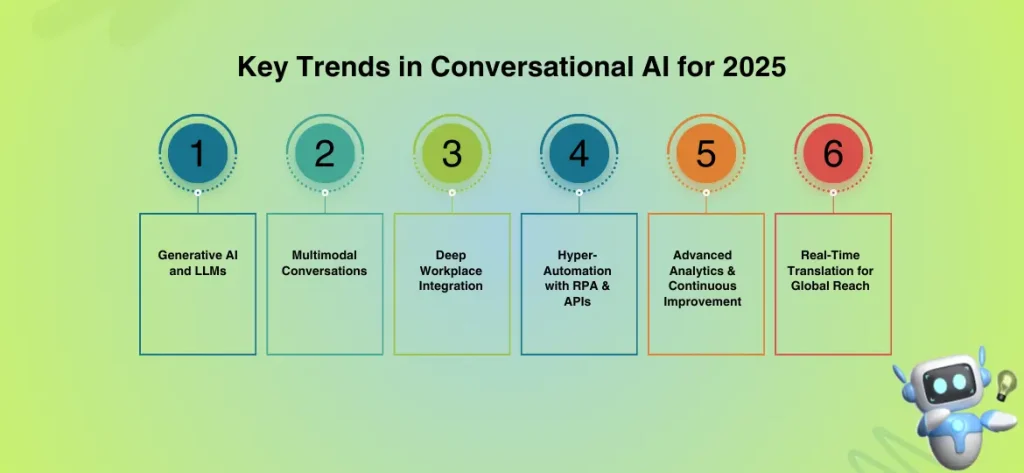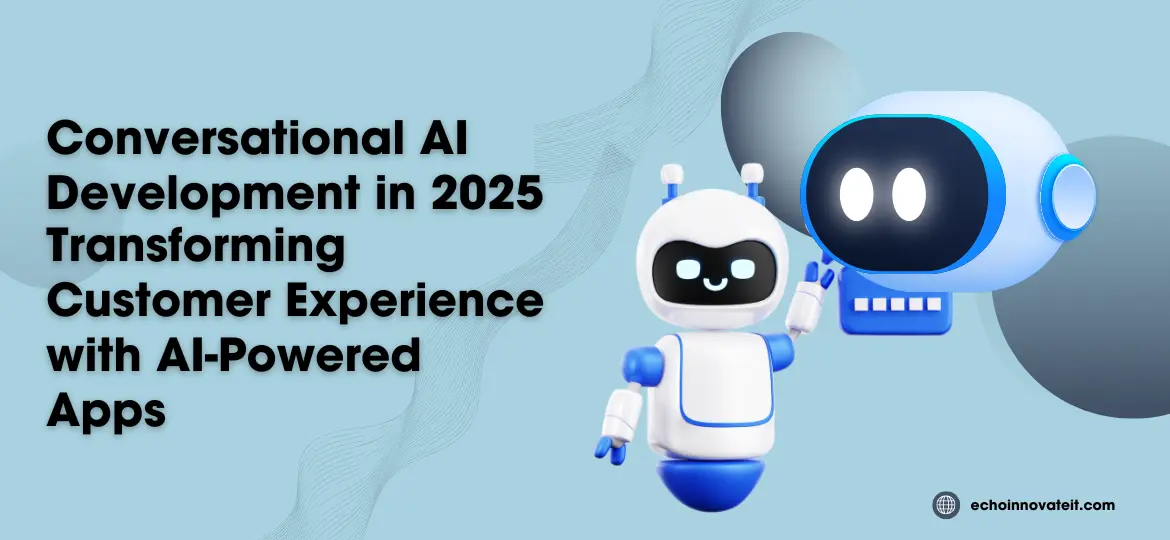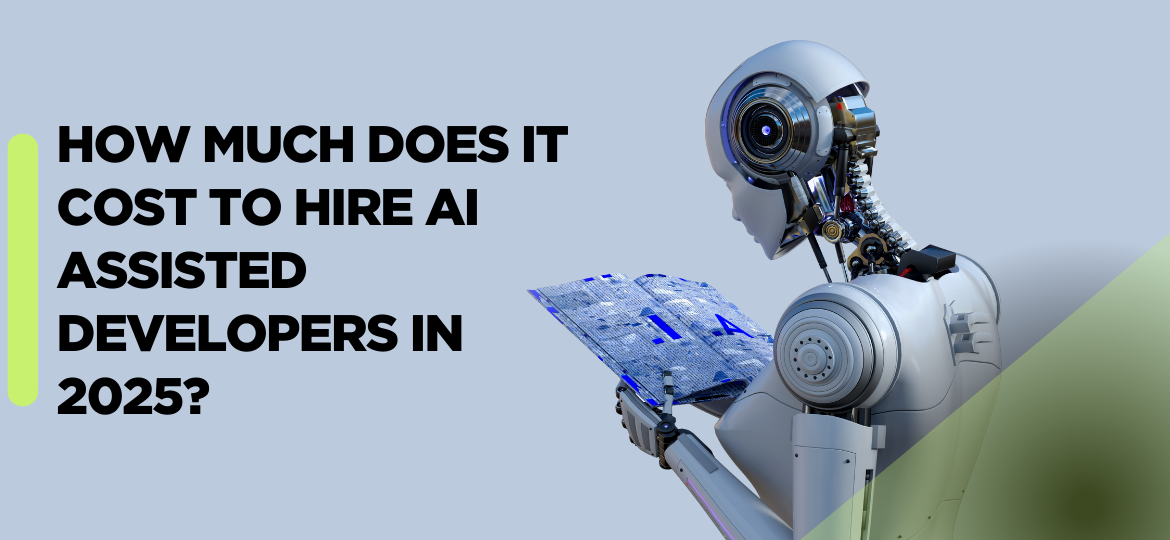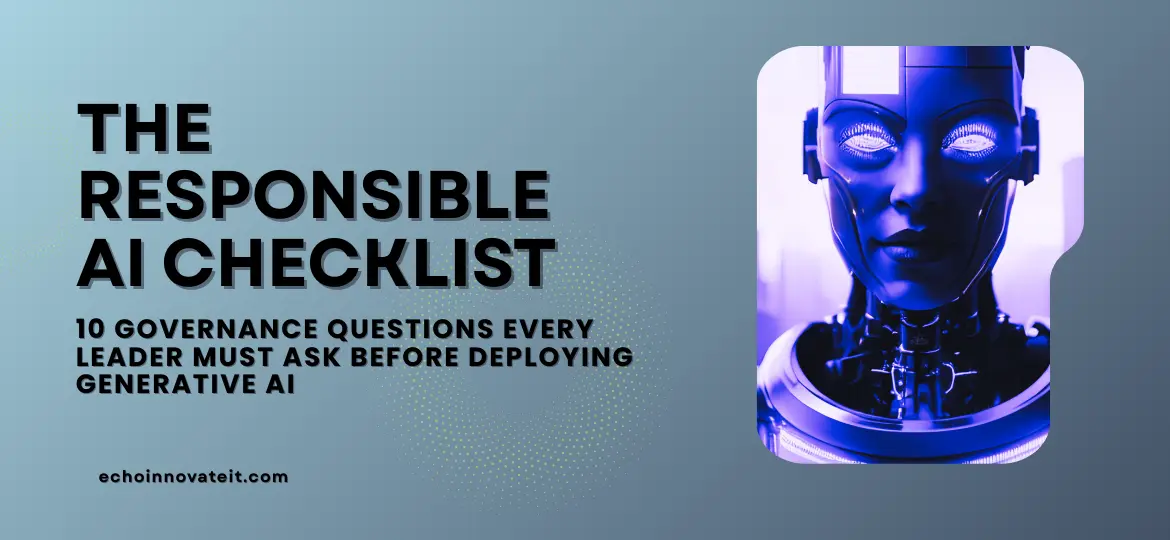In just seconds, your voice command is processed, intent is understood, and a response is delivered seamlessly. This is the power of conversational AI, and it’s no longer limited to basic chatbots. In 2025, businesses in the USA are integrating AI development, mobile app development, iOS app development, and Android app development with conversational AI to create smarter, faster, and more human-like digital interactions.
At EchoInnovateIT, we specialize in building AI-powered applications that go beyond automation to deliver personalized customer engagement, scalable support, and innovative app experiences.
Key Trends in Conversational AI for 2025

-
Generative AI and LLMs
With large language models (LLMs) like GPT-5, conversational AI now delivers human-like, context-aware responses, understands subtle requests, and maintains conversations over longer interactions. Businesses in the USA are embedding these features into iOS and Android apps to enhance personalization and user engagement.
-
Multimodal Conversations
Conversational AI is expanding beyond text and voice. In 2025, AI can process images, documents, and multimodal inputs, making apps smarter and more interactive. Imagine an AI-powered healthcare mobile app where patients upload medical reports, and the AI instantly provides context-aware assistance.
-
Deep Workplace Integration
From Microsoft Teams to Google Workspace, conversational AI is embedded directly into daily workflows. For USA businesses, this means faster collaboration, automated task management, and smoother operations.
-
Hyper-Automation with RPA & APIs
AI is now working hand-in-hand with Robotic Process Automation (RPA) and API orchestration. This enables companies to automate complex, multi-step business processes like billing, HR onboarding, and logistics—transforming enterprise mobile app solutions in industries like healthcare, fintech, and retail.
-
Advanced Analytics & Continuous Improvement
Businesses in the USA can now access real-time AI-driven insights, helping them analyze user behavior, identify gaps, and measure ROI. This improves not only customer service but also product design, marketing, and sales strategies.
-
Real-Time Translation for Global Reach
AI enables seamless, real-time multilingual conversations, allowing businesses in the USA to expand globally while catering to diverse local markets. For example, a retail eCommerce app can now support Spanish, Mandarin, or Hindi customers instantly, boosting engagement and conversions.
Business Benefits of Conversational AI in 2025
- Enhanced User Engagement: Personalized, emotion-aware AI improves customer loyalty.
- 24/7 Customer Support: AI-powered chatbots provide instant, round-the-clock assistance.
- Operational Efficiency: Automating repetitive tasks reduces costs and improves team productivity.
- Competitive Advantage: Smart, multilingual apps offer a superior customer experience.
- Scalability: Businesses can scale support operations without expanding headcount.
Industry Impact of Conversational AI
- Customer Service: AI chatbots reduce wait times, resolve issues instantly, and improve CSAT scores.
- Healthcare: AI-powered apps streamline appointment scheduling, telemedicine, and patient support.
- Retail & eCommerce: Conversational AI delivers personalized shopping assistance, 24/7 support, and AI-driven product recommendations in both iOS and Android apps.
What is Conversational AI?
Conversational AI is a next-generation technology that enables apps, websites, and digital platforms to communicate in natural human language—through voice or text—using AI, NLP (Natural Language Processing), and machine learning. It powers virtual assistants, chatbots, and mobile apps to provide instant, human-like responses, streamlining customer support and improving engagement.
By 2030, the conversational AI market is expected to surpass $50 billion, with industries like healthcare, retail, finance, and enterprise software relying on it for customer experience.
Why USA Businesses Are Investing in Conversational AI in 2025
Today’s digital-first customers expect real-time support across devices and platforms. For USA businesses—whether you run a startup in San Francisco, a healthcare app in New York, or an eCommerce platform in Texas—conversational AI is no longer optional; it’s a competitive advantage.
- 24/7 AI-powered support without hiring extra staff.
- Scalable customer engagement across websites, mobile apps, and iOS/Android platforms.
- Personalized experiences using machine learning insights.
- Faster conversions with instant replies during peak buying moments.
- Integration-ready solutions with CRMs, ERPs, and cloud-based services.
Whether you’re building a fintech app, AI-driven healthcare solution, or a USA-based eCommerce platform, conversational AI can transform user experience.
Core Components of Conversational AI
- Natural Language Processing (NLP) – Helps AI understand human intent, context, and tone.
- Machine Learning Models – Improve response accuracy with every interaction.
- Voice Tech (TTS & STT) – Power voice assistants in iOS apps, Android apps, and smart devices.
- Dialogue Management – Ensures conversations feel natural and logical.
- Integration Frameworks – Connects with mobile apps, payment gateways, CRMs, and third-party APIs.
How to Build Conversational AI in 2025: A 7-Step Guide
- Define user intent and business goals.
- Choose the right AI development framework (Rasa, Dialogflow, AWS Lex).
- Collect domain-specific training data.
- Design conversational flows for iOS and Android app users.
- Train and fine-tune AI models for accuracy.
- Test AI with real-world user inputs.
- Deploy, monitor, and scale across platforms.
At EchoInnovateIT, our team uses a product-first approach—aligning conversational AI with your mobile app development strategy to maximize ROI.
Cost and Timeline of Conversational AI Development
- Basic AI Chatbot (FAQ automation): 3–5 weeks | $10K–$25K
- Mid-level Conversational AI (multi-platform, contextual AI): 8–12 weeks | $30K–$75K
- Advanced AI Assistants (multilingual, integrations, predictive AI): 4–6 months | $80K–$200K+
The exact cost depends on app complexity, training data, iOS/Android integrations, and security requirements.
Final Thoughts: Why Partner with EchoInnovateIT?
Conversational AI Development in 2025: Transforming Customer Experience with AI-Powered Apps
What is conversational AI in mobile app development?
Conversational AI integrates chatbots and voice assistants into iOS and Android apps to provide real-time, human-like support.
How much does it cost to develop conversational AI in the USA in 2025?
It ranges from $12,000 to $200,000+ depending on complexity, app integrations, and training data.
How long does it take to build a conversational AI solution?
A basic AI bot takes 3–5 weeks, while advanced systems take 4–6 months.
Can conversational AI improve customer support for small USA businesses?
Yes. It provides 24/7 customer support without increasing staffing costs.
What industries in the USA use conversational AI the most?
Healthcare, eCommerce, fintech, education, and enterprise SaaS apps.
How does conversational AI integrate with iOS app development?
By embedding AI SDKs and APIs, iOS apps can use voice and chat assistants seamlessly.
Is AI development secure for handling customer data?
Yes, when built with HIPAA, GDPR, and CCPA-compliant frameworks.
What’s the difference between conversational AI and generative AI?
Conversational AI focuses on real-time interactions, while generative AI creates new content (text, images, or code).



